| Our Publications | ||
| Books by Title | ||
| Books by Author | ||
| Books by Country | ||
| E-books | ||
| About | ||
| Orchid Press E-books | ||
| Distributed E-books | ||
| Our Bookshop | ||
| About Us | ||
| Browse Shop | ||
| How to Buy | ||
| Contact Us | ||
| WE BUY BOOKS AND LIBRARIES | ||
|
||
Asian Portraits
Asian Portraits is a series on life in Asia. These biographies or life-stories throw light on extraordinary lives of unique characters, who have experienced or observed the ebb and flow of history in Asia from various vantage points.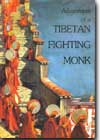 |
Adventures of a Tibetan Fighting Monk by Tashi Khedrup Compiled by Hugh Richardson Edited by Tadeusz Skorupski 1986, 1998. 135 pp., 21.5 x 15 cm., softcover ISBN-10: 974-8299-17-1 $18.00 ISBN-13: 978-974-8299-17-4 Memoirs of a ‘Dob-dob’ or fighting monk, trained to keep the peace in a monastic community of several thousand monks, during and after the Chinese invasion of Tibet, in 1959. |
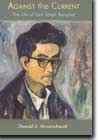 |
Against the Current: The Life of Lain Singh Bangdel by Donald A. Messerschmidt 1st edition 2004. 232 pp., 12 b&w and 10 colour plates 24.5 x 17.5 cm., hardcover ISBN-10: 974-524-052-4 $27.95 ISBN-13: 978-974-524-052-0 WINNER - International Civil Golden Award 2004, presented by the Prime Minister of Nepal The life of Lain Singh Bangdel (1919-2002), Nepalese writer, painter and art historian, was infused with a deep understanding and empathy for the oppressed of his native land. His artistic works served both to interpret and to preserve the rich ancient culture of Nepal. His novels, written early in his life, altered the course of Nepali literature with their realistic descriptions of downtrodden Nepalese. As a painter, he achieved lasting acclaim for his innovative leadership and became known as the ‘father of modern art in Nepal’. As an art historian, Bangdel toiled tirelessly to document, clarify and preserve the rapidly vanishing sculptural relics of Kathmandu Valley’s ancient past. An inspiring tribute to a true ‘renaissance man’ of Nepal, written by an anthropologist with a 40-year association with the country. [Read a review of from Peace Corps Worldwide] |
 |
Asian Commitment Travels and Studies in the Indian Sub-Continent and South-East Asia by David Snellgrove 2000 635 pp., 178 illustrations, 65 colour plates, 17 maps. 24.5 X 17.5 cm. ISBN-10: 974-8299-31-7 (Softbound) $45.00 ISBN-13: 978-974-8299-31-0 ISBN-10: 974-8304-94-9 (Hardbound) $55.00 ISBN-13: 978-974-8304-94-6 This book is the autobiographical account of the enthusiasms and disillusionments, of the disappointments and enjoyments of an entire, quite extraordinary lifetime. It is an epic story of scholarship and travel that spans the history, geography, religions and cultural connections of South and Southeast Asia. Until his early retirement in 1982, David Snellgrove was Professor of Tibetan Studies at The School of Oriental and African Studies, University of London. But his travels and his interests took him much further afield, and the work gives an account of his series of remarkable research expeditions from 1943 until today, taking him through India, Nepal and Bhutan, as well as more recent research travels in the western archipelago of Indonesia, Malaysia and Thailand, before he quite recently made his second home in Cambodia. For a period from 1969-72, the author was also a Buddhist consultant at the Vatican, and conviction of the importance of the religious dimension in all human society pervades the entire book. The Epilogue draws these various strands together, and evaluates the religions previously discussed – the various forms of Buddhism, Hinduism and Islam, as well as some indigenous cults and Christianity. The book is richly illustrated, and its pages are permeated with evidence of the author’s faculty for adaptability, combined with the gifts of energy, perception and enthusiasm. |
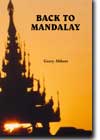 |
Back to Mandalay: An Inside View of Burma by Gerry Abbott 2nd edition 2004. 203 pp., 18 ill., 2 maps, bibliography, 21.5 x 15 cm., softcover ISBN-10: 974-524-042-7 $23.00 ISBN-13: 978-974-524-042-1 When the author assumed a two year lecturing position in English language at a college in Mandalay in 1986, little did he realize that he was to witness the lead-up to one the most brutal political crackdowns in recent southeast Asian history. His highly personal account of life in Burma, the growth of unrest, the onset of massive pro-democracy rallies, and their ultimate failure after violent military suppression in 1988 is persented in heart-wrenching clarity. An appendix provides a translation of Mandalay students’ records of the ‘Sagiang Massacre’ in August, 1988. [Read a review of from The Journal of the Siam Society] [Read a review of from The Nation] |
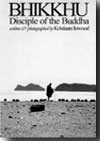 |
Bhikkhu: Disciple of the Buddha by Kristiaan Inwood Second revised printing Orchid Press 2005 (1st ed. Privately Printed 1981). 208 pp., 178 b&w pl.,, 21.5 x 15 cm., softcover ISBN-10: 974-524-059-1 $22.00 ISBN-13: 978-974-524-059-9 Records the first monastic year of a 38-year-old Californian who was ordained in a Thai Buddhist monastery. The Californian neither sought nor received special privileges. In every detail, he lived the celibate and abstemious life of the orthodox Theravadin bhikkhu, and embarked on a spiritual quest as relevant in today’s troubled world as it was 2,500 years ago when the Buddha taught the original bhikkhus. In many respects, the Californian’s story is as old as Buddhism itself. In others it is as modern as tomorrow. [Read a review of from The Phuket Gazette] [Read a review of from The Nation] |
 |
The Caged Ones by Ludu U Hla. Illustrated by U Wa Thone. First English edition 1986, 1998. viii, 144 pp., one b & w plate, 16 b & w drawings. 21.5 X 15 cm., softbound ISBN-10: 974-8299-15-5 $18.00 ISBN-13: 978-974-8299-15-0 Malay language edition: Mereka Yang Terkurung, 1990, ISBN 983-62-1383-X Imprisoned for political reasons in the 1950’s (and later), Ludu U Hla—perhaps Burma’s most prolific modern author and collector of Burmese folklore and cultural material—penned these sensitive portraits of his teenage fellows-behind-bars. His sympathetic probe of ‘criminals’ old and new, willing and unwilling, uncovers the social pressures and failings that turn the weak, the young and unfortunate against society, and harden them in a career of crime. This book won a UNESCO prize in 1958. |
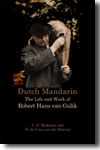 |
Dutch Mandarin: The Life and Work of Robert Hans van Gulik by C. D. Barkman & H. de Vries-van der Hoeven 2018, 362 pp., 31 b&w photos, 14 b&w line drawings & figures, 23 x 15 cm, softbound. ISBN-13: 978-974-524-200-5 $29.95 Diplomat, Asian scholar, author, polyglot, polymath, passionate lover of life in all its forms, Robert van Gulik researched and wrote prolifically on a wide range of Asian subects, such as Chinese scroll mounting, sexual life in China and the Chinese lute—an instrument that he was also mastered as a musician. In addition to his more esoteric writings, van Gulik achieved wide popular fame as the author of a series of mystery novels based on the life of semi-fictional Judge Dee in ancient China. Two former colleagues and close acquaintances of van Gulik have combined their own experiences with recollections of family and other contemporaries, as well as detailed entries in the diaries of the man himself to provide us with an entertaining and highly readable portrait of a remarkable life. A must-read for the Asian specialist as well as van Gulik’s many admirers among the general public. |
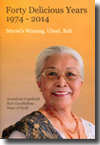 |
Forty Delicious Years 1974-2014 Murni’s Warung, Ubud, Bali compiled by Jonathan Copeland, Rob Goodfellow & Peter O’Neill 2014, 152 pp., 43 b & w photos, 21 x 14.5 cm, softbound. ISBN-13: 978-974-524-181-7 $12.95 Forty Delicious Years is the story of Bali’s most enduring culinary landmark – Murni’s Warung in Ubud. Narrated by some of the Warung’s most intriguing patrons, with a Preface by Murni herself, the book tells the story of how a humble roadside stall became an institution – in fact a ‘must visit’, on a magical ‘must visit’ island. This easy to read and immensely enjoyable collection of vignettes has been published to celebrate the 40th anniversary of Murni’s Warung in February 2014. “It’s an institution. It’s a favourite; and a hive of memories and friendships. It’s Murni’s Warung.” Jero Asri Kerthyasa “It’s not just food and a good time that you get at Murni’s Warung, but a complete sensual experience.” Professor Michael Hitchcock “Murni’s Warung… the best clubhouse in the Universe.” Karen Goodman “Murni is and always will be one of my favourite mothers in town.” Janet de Neefe “For forty delicious years Murni’s Warung has been somewhere to relish life, excellent service, good food, and the company of friends.” José in den Kleef [Read a review of from The Jakarta Globe] |
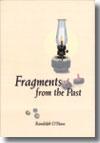 |
Fragments from the Past by Randolph O’Hara 2008, v, 78 pp., 21 x 14 cm., 10 b & w illustrations, softbound ISBN-10: 974-524-082-6 $12.95 ISBN-13: 978-974-524-082-7 The author takes us on a nostalgic trip back to his childhood days in Burma, recalling a life of hardship and at times hunger, yet rich in the remembrance of simple pleasures and warm human relationships. The impoverished circumstances of his upbringing are recalled as the motivation for the self reliance and bravery that he was able to develop - characteristics that, when later leaving his home forever, no doubt enabled him to forge a successful life in his newly adopted country. Fragments from the Past is a testimony to the importance of remembering our past, no matter how far away we travel, nor how high we rise. ". moving and meaningful, tragic and funny, reflective and evocative." |
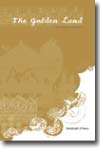 |
The Golden Land by Randolph O’Hara 2008, viii, 124 pp., 21 x 14 cm., softbound ISBN-13: 978-974-524-101-5 $14.95 In the final years of colonial Burma, young Andrew Wells arrives in Rangoon to assume a post in the Commissioner´s office, assigned to seek solutions for escalating crime and social unrest in the countryside. As he grows fond of his adopted country, its people, and in particular of a comely Burmese, Mya Shwe, in the cipher office, Andrew also begins to penetrate the cultural veil that obscures, for many in the colonial administration, the underlying causes of unrest. The gentle romance between Andrew and Mya Shwe unfolds against a backdrop of upheaval and eventually violence in colony, leading to dramatic changes in both of their lives. O´Hara´s novel has much to teach the reader on the flavour of Burmese culture as well as the emergence of the independent state in the first half of the 20th century. |
 |
The Great Po Sein by Maung Khe Sein and Joseph A. Withey 1965, 1998. xiv, 170 pp., 13 b & w drawings, 15 b & w plates. 21.5 X 15 cm., softbound. ISBN-10: 974-8299-03-1 $23.00 ISBN-13: 978-974-8299-03-7 This book is about the legendary Po Sein (1877-1952), “Father of the Burmese Theatre”, told by his son Maung Khe (Kenneth) Sein. It is the story of PO Sein, the performer, his ambitions, his struggles, his many imaginative theatrical innovations, his hypnotic effect on those who worked for him and those who watched him perform, and his very romantic life and loves. Equipped with exceptional artistry and a splendid sense of showmanship, he survived, in his lifetime, the last of the Burmese kings, the British, the Japanese and the Burmese Nationalists. Moreover, he conquered them all with his enchanting art. The history of his remarkable troupe, which entertained generations of Burmese from the mid-1890s until his death in 1952, and which continued for two more decades, led by his two very able sons, is also the history of Burmese performing arts in this century. |
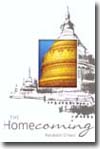 |
The Homecoming by Randolph O’Hara 2006. v, 73 pp., 21 x 14 cm., 10 b & w illustrations, softbound ISBN-10: 974-524-079-6 $12.95 ISBN-13: 978-974-524-079-7 A renowned American novelist once wrote that one ‘can never go home again’, but as the author demonstrates in this delightful and subtle account, such is not the case-we can and should cherish our past and, from time to time, we must reaffirm our roots. O’Hara’s homecoming to Burma, as he gives us glimpses into a youth that was punctuated by hardship and loss, reveals a character determined to succeed, even at the expense of abandoning his country of birth. In parallel it points to some of the causes of that nation’s failure to realize its great potential. |
 |
The Hill of Fire by Monica Bose 2002. 164 pp., 30 b & w pl. 21.5 x 15 cm., softbound. ISBN-10: 974-524-003-6 $23.00 ISBN-13: 978-974-524-003-2 The Hill of Fire is a fascinating account of a courageous woman’s search for Truth carried to the very heart of Buddhism and Hinduism. Suzanne Alexandra Curtil, a talented dancer, doctor and diviner left her native France in 1925 for India. There she became a Buddhist priestess, the first woman to enter the Southern Buddhist or Theravada religious order in 800 years. On a mission to the Himalayas, she met and was instructed by the renowned Tibetan Buddhist Teacher, Tromo Geshe Rinpoche. In 1936 she went to visit Sri Ramana Maharshi who dwelt on Arunachala, known as the Hill of Fire, in Tiruvannamalai, southern India. She remained many years in Tiruvannamalai to practise the great Seer’s teachings. She also engaged in selfless medical practice in the town and surrounding villages. This book, because it relates authentic experiences, will be of interest to all those who seek the core Reality and to live the peace and reconciliation that such knowledge brings. THE HILL OF FIRE is written with care and sensitivity by her daughter, who adds her own memories of Sri Ramana Maharshi, and of life in the temple town of Tiruvannamalai. [Read a review] [Read an excerpt] |
 |
In Search of Sunlight Burmese Migrant Workers in Thailand by Pim Koetsawang 2001. 176 pp., 11 illustrations, map. 21.5 X 15 cm., softbound. ISBN-10: 974-8304-92-2 $17.00 ISBN-13: 978-974-8304-92-2 Since the repressive military regime (SLORC - now SPDC) seized power from the former military government (BSPP) led by General Ne Win in Burma in 1988, the Burmese people have suffered increasingly untold repression and intolerable living conditions. For many, flight to Thailand has become a means not just to earn money on which to live, but merely to survive. On the Thai side of the border, some have faced almost equally repressive working and living conditions and an uncaring Thai government that has vacillated in its official attitude towards migrant workers. The journey to the new country, too, is fraught with dangers, dishonesty and double-dealings, much of it from Thai and Burmese government officials and private entrepreneurs alike. The author has lived amongst and visited such people, both along the Thai/Burma border and in migrant communities close to Bangkok. She has documented their stories and their plight, and presents a harrowing picture of a powerless group caught between two evils, merely seeking to eke out a living under adverse conditions. The book exposes the maltreatment such people receive and explains their plight and motivations for making the move. [Read a review] |
 |
The Kinwun Min-Gyi’s London Diary: The First Mission of a Burmese Minister to Britain, 1872 by L.E. Bagshawe 2006. 412 pp., 26 b&w ill., 1 table, index, 24.5 x 17.5 cm., hardcover ISBN-10: 974-524-021-4 $45.00 ISBN-13: 978-974-524-021-6 In the years following the Second Burmese War, British colonial authorities occupied approximately half of the Kingdom of Burma, as far east as the Irrawadi Valley, effectively controlling the entire Kingdom’s access to the sea, and thus its ability to engage freely in international trade. Yet the British neither formally annexed nor declared free the remaining portion of the Burmese kingdom. Min-don, the newly crowned king of what remained of Burma, walked a fine line with his uninvited and powerful foreign ‘guests’, attempting to balance cordiality toward the intruders with at least the appearance of independent authority over the remaining, unoccupied, part of the kingdom. An uneasy balance between co-operation and antagonism thus characterized the attitudes of both the Burmese and British authorities toward one another, a balance that became increasingly strained following the bitter experiences of the British in India in 1857, and Calcutta’s new determination that British Burma, at least, should be fully assimilated into their system. The Kinwun Min-gyi was a voice of moderation in the clamour of opinion in the Burmese court as to how to deal with the British usurpers, convinced as he was of the need to cooperate with and even to emulate the West in order to strengthen the Burmese chances of eventually winning back their territory and freedom. Thus the first Burmese diplomatic mission to London in 1872, led by the Kinwun Min-gyi, worked zealously both to convey Burma’s culture and underlying civility to the world, and to further the understanding of the West in the minds of the Burmese. Despite strong opposition from the rulers of British India in Calcutta, who saw the mission as an attempt by the Burmese Court to establish direct communication with London, and thus to bypass their authority, the mission succeeded in both objectives. Accomplished statesman, scholar and gentleman, the Kinwun Min-gyi was well suited to lead this first Burmese mission to the heart of the British Empire. His daily record of the momentous journey and of the reactions of the Envoys to their first observations of Western cities, technology and mores, made available again after many years’ obscurity in a new translation, remains a fascinating and enlightening document for all with interest in this turbulent period of Burmese history. [Read a review of from the Journal of the Siam Society] [Read a review of from The Nation] [Read a review of from Planet Myanmar] |
 |
Lao Roots Fragments of a Nordic-Lao Family Saga by Fleur Brofos Asmussen 1997. 260 pp., richly illustrated with 86 historical photographs. 21.5 X 15 cm., softbound ISBN-10: 974-8299-27-9 $23.00 ISBN-13: 978-974-8299-27-3 In 1990 the author travelled to Laos to find her relatives still living there. For years she and her sister had sought the descendants of their grandmother, Sao Boun Ma. These Laotian relatives were finally found in Vientiane. The search revealed a complex and fantastic story. The Norwegian grandfather, Peter Hauff, who died in 1951, left a long account of his experiences as a trader in Indo-China (1890-1928) with a number of hitherto unknown photographs of Laos and Cambodia/Vietnam. Nowhere did he mention the Laotian mother of one of his daughters, and the Vietnamese mother of the other. Shortly after his son drowned and the premature death in Laos of his equally fantastic Swiss business partner, Hans Faesh, the energetic Peter Hauff left for Europe in 1905 with his two daughters. He married a woman probably not of his choice, and returned to Vietnam to continue trading. He eventually settled in France, and died there, never having seen again his Sao Boun Ma whom he described in a note shortly before his death as “the honest and faithful”. [Read a review] |
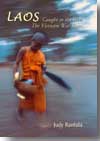 |
Laos: Caught in the Web The Vietnam War Years by Judy Austin Rantala 2nd edition Orchid Press and Anaoi Press 2005. (1st edition 1994). 256 pp., 1 map, 18 b&w photos 21.5 x 15 cm., softcover ISBN-10: 974-524-060-5 $18.00 ISBN-13: 978-974-524-060-5 The small nation of Laos was little known to most Westerners when the author and her husband, a USAID worker, moved to Laos in 1971. Befriended by two young Laotians, the author became a part of village life, joining holiday celebrations, weddings, funerals and feasts. Over a four-year period, she developed a deep admiration and affection for the Lao people. The humour and pathos of these chaotic years before the Communist take-over of the government in 1975 are chronicled by following one Lao family in Communist-controlled re-education camps, to their eventual resettlement in the United States. [Read a review] |
 |
The Last Wali of Swat An autobiography as told to Fredrik Barth 1985, 1995. 200 pp., 18 b & w pl., 2 maps. 21.5 X 14.5 cm., softbound. ISBN-10: 974-8299-70-8 $18.00 ISBN-13: 978-974-8299-70-9 History has moved very swiftly in some parts of Asia, and the personal recollections of Miangul Jahanzeb, the Wali of Swat, span a breath-taking series of transformations of which he himself was partly architect, partly prominent participant or privileged spectator. When he was born in 1908 the Swat valley formed a complex but stateless society of several hundred thousand members, linked to the archaic cosmopolitanism of Inner Asia but hardly touched by centuries of external influence. Indeed, the Swat valley had never even been seen by an Englishman until 13 years before the Wali’s birth. During his childhood, his father emerged as the creator and ruler of a new state in this tribal territory. For twenty years, from 1949 to 1969, Wali Sahib himself ruled this state until it was peacefully merged with Pakistan. |
 |
Letters from a Burmese Grandfather by Randolph O’Hara 2013, 103 pp., 20 x 13 cm., softbound. ISBN-10: 974-524-119-9 $12.95 ISBN-13: 978-974-524-119-0 In the waning years of his life, an elderly Burmese gentleman, a retired Court official in the early 19th century, writes letters to his young grandson. In the sixteen messages that comprise the chapters of this book, the old man, drawing examples from his deep knowledge of the country’s recent history, its folklore and religion, attempts to convey to the boy the wisdom and most important lessons that he can distill from his life. Partly historical, partly philosophical, enjoyably readable, there is something for all generations in this delightful work of historical fiction. [Read a review from The Hong Kong Arts Development Council] [Read a review from The South China Morning Post] |
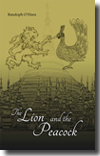 |
The Lion and the Peacock by Randolph O’Hara 2014, 94 pp. 22 x 14 cm., softcover. ISBN-13: 978-974-524-180-0 $12.95 The 19th century was one of the most tumultuous in recent Burmese history, encompassing as it did three brutal wars between British and Burmese forces. The outcome of these conflicts, as well as of a series of bloody internal rebellions and murderous court intrigues, was the humiliating annexation first of the southern part of the country, followed eventually by the subjugation of the entire Burmese kingdom by the colonial government of British India. O&Hara skillfully reveals these turbulent events through the shifting fortunes of Sai Win&s family, as well as by the relationship of two long-time friends, Sai Win, a Burmese and Speirs, an Englishman, both honourable men. Along the way the author provides fascinating glimpses of the rhythms and minutae of Burmese traditional life. This warm and approachable tale comprises the second part of a trilogy on British Burma. Both this volume and the complete trilogy are recommended reading for young and old alike who have interest in learning of Burmese history and traditional culture. |
 |
Memories from Afar by Randolph O'Hara 2007. 68 pp., b & w illustrations, 21 x 14 cm., softbound. ISBN-10: 974-524-095-8 $14.95 ISBN-13: 978-974-524-095-7 Memories from Afar follows the lives of two young men in Burma-one of royal blood and one commoner-whose lives, while separated by some 60 years in time, are linked by shared custom, traditions and beliefs. Both are forced to struggle against and eventually to flee from oppression; on the one hand that of court intrigue and violence, and on the other, the harsh effects of poverty and a broken home. The parallels continue into their senior years, lived in exile far from their homeland. O’Hara’s novella is a whimsical and nostalgic view of growing up in troubled times, of finding the strength to endure and eventually, in one way or another, to prevail. Along this journey, the author introduces us to the sights and sounds of life in traditional Burma. |
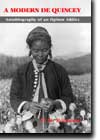 |
A Modern de Quincey: Autobiography of an Opium Addict by H. R. Robinson 2nd edition 2004. 152 pp., 5 b&w plates, 1 map, 21.5 x 15 cm., softcover ISBN-10: 974-524-038-9 $23.00 ISBN-13: 978-974-524-038-4 Captain Robinson, completing a posting as a young British administrator in remote northern Burma, returned to Mandalay in 1923 to await a new assignment. One evening, Robinson and two friends, came upon an opium den. While his friends called it a night, Robinson stayed on to sample the forbidden pleasures within—a decision that was to alter his life forever. Thus commences an incredible, autobiographical account of the seduction of a naive young romantic by the East, and of his eventual narrow escape from death. First published in 1942, the book has become a sought-after rarity among British colonial accounts, now republished with a new foreword by Gerry Abbott. [Read a review from The Fortean Times] [Read a review from The Nation] [Read a review from The Guardian] [Read a review from The South China Morning Post] |
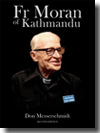 |
Moran of Kathmandu Pioneer Priest, Educator and Ham Radio Voice of the Himalaya. by Donald A. Messerschmidt 2nd ed., 2012, 388 pp., 15 b&w illustrations, index, 23 X 15 cm., softbound. ISBN-13: 978-974-524-140-4 $29.95 Marshall Moran set out from Chicago in 1929 to join a Jesuit mission in Asia. Over the next six decades he became one of the continent’s most remote celebrities, a pioneer priest and educator and one of the “rare ones” among the world’s amateur radio fraternity, at home in the heart of the Himalayas. In India and Nepal he taught the sons of the rich and the poor, the powerful and the unpretentious alike. From simple beginnings he set the first standards for modern education in Nepal. In time, he became known far and wide as ”Father Moran of Kathmandu”. In this newly revised edition of his biography, writer and anthropologist Don Messerschmidt brings the story of Fr Moran, SJ, to life. It is a remarkable and inspiring tale of quiet accomplishment. “Very few people are able to create possibilities and persevere for success in the face of unimaginable odds… Fr. Moran’s life should inspire many others.”Kumar Pandey, The Nepal Digest [Read a review of the first edition from Radio Society of Great Britain, January 1998] [Read a review of the first edition from The Kathmandu Post] [Read a review of the first edition from The Journal of Contemporary Asia] |
 |
The Murderous Revolution by Bunhaeng Ung and Martin Stuart Fox 1985, 1986, revised and updated 1998. vii, 200 pp., 57 b & w drawings. 21.5 X 15 cm., softbound. ISBN-10: 974-8299-14-7 $23.00 ISBN-13: 978-974-8299-14-3 It was in 1975 that the Khmer Rouge seized power in Cambodia, and instituted a reign of terror and brutality which gradually became known in the rest of the world. Cities were emptied, and the entire population forced out to work in the countryside. Hundreds of thousands of officials, army officers and intellectuals were murdered, and as many as two million people died of malnutrition and disease from 1975 until the Vietnamese intervention in 1979. This book tells the story of those years. It recounts the personal experiences of a young student of fine arts, who lived to draw what he had witnessed, and to tell his story. |
 |
North of India Some 19th Century Europeans in the Himalayan Regions and Central Asia by David Robertson 1998 xii, 182 pp., 19 colour plates and 17 b & w plates, 5 maps, comprehensive index. 21.5 X 15 cm., softbound. ISBN-10: 974-8299-08-2 $25.00 ISBN-13: 978-974-8299-08-2 The author, a well known scholar, mountain climber and traveller, has compiled the fascinating life-stories of a number of well known and less known Nineteenth Century European travellers in the Himalaya and Central Asia. We meet the Hungarian grammarian and scholar Csoma de Koros, the Englishman Richmond Shakespear, “Knight Errant in Central Asia” and the famous botanist Joseph Dalton Hooker. Then there are Ashley Eden, whose not so successful forays into Bhutan and Sikkim are well known, as well as the educator William Delafield Arnold who worked mostly in Punjab. And finally we shall meet the Moravian missionaries in Lahoul and Ladakh. [Read a Review] |
 |
On the Road to Mandalay Portraits of Ordinary People by Mya Than Tint Translated by Ohnmar Khin and Sein Kyaw Hlaing. 1987-91, First English translation 1995. 284 pp., maps, colour illustrations by U Win Pe. 21.5 X 15 cm., softbound ISBN-10: 974-8299-25-2 $23.00 ISBN-13: 978-974-8299-25-9 Inspired by Chicago journalist Stud Terkel’s accounts of hopes and dreams of ordinary Americans, Rangoon-based writer Mya Than Tint introduces us to thirty-four of Burma’s forty million ‘ordinary people’, the a-nya-ta-ra. As he travelled through Burma on literary lecture tours in the late 1980's, he encountered porters, sailors, fortune-tellers, waitresses, artists and petty criminals ‘on the road to Mandalay’. This is Mya Than Tint’s first major work to be translated into English. [Read a review from Planet Myanmar] |
 |
Peter Aufschnaiter’s Eight Years in Tibet Compiled and Edited by Martin Brauen 2002 208 pp., 70 b & w plates, 67 color plates, 9 maps. 24.5 x 17.5 cm., hardbound. ISBN-10: 974-524-012-5 $50.00 ISBN-13: 978-974-524-012-4 A remarkable personal account of a sojourn of nearly eight years in Tibet, ending in 1952, compiled from the notes, sketches and photographs of Peter Aufschnaiter. An Austrian agricultural engineer, Aufschaiter developed a deep love and sympathy for the Tibetan people, sentiments which were readily reciprocated. Throughout his stay in Tibet, Aufschnaiter worked tirelessly not only to understand the people, their culture and religion, but also to share his skills in any area which could improve their lot. A brilliant linguist, mountaineer and observer, Aufschnaiter provides us with the most detailed and sensitive record available of the Tibetans and their way of life, on the eve of the Chinese invasion which was to wreak such irreversible damage to this unique culture. [Read a Review] |
 |
Tiger Men A young Australian among the Rhade Montagnard of Vietnam. by Barry Petersen First published in Australia/UK in 1988. Third edition 1994. xii, 246 pp., 22 b&w pl. 21.5 X 15.2 cm., softbound. ISBN-10: 974-8299-13-9 $18.00 ISBN-13: 978-974-8299-13-6 Twenty-five years after he left Vietnam and his Montagnard tribesmen, Australian Barry Petersen wrote this thoughtful story of his life among the Rhade and other ethnic groups of Darlac province in the Vietnam highlands. He went there to train and lead the local people to defend their villages and homes against the Viet-Cong. This is the story of the Truong Son, ‘Tiger Men’, who became the most respected and feared self-defence force in Vietnam. But it is also the sad story of their subsequent defeat and the destruction of the Montagnard villages, culture and way of life--as much due to the Vietnamese and American generals and politicians as to the Vietcong. This is a book which the CIA would rather not see in print. [Read a Review] |

|
Vapour Trails Tales from Rural Thailand by Tarmo Rajasaari 2003, 160 pp.,15 b & w illustrations, 21.5 x 15cm., softbound. ISBN-10: 974-524-026-5 $17.95 ISBN-13: 978-974-524-026-1 These fifteen short stories reflect various facets of life and memorable characters that populate Thailand’s rustic north-east region of Isaan - a land where existence is defined by hardship and toil. In Isaan, virtually untouched by the modernization that has swept over the rest of the country in recent years, the author describes the charm and sincerity - and also the eccentricities - of the inhabitants in a way that clearly reveals his own affection for the people among whom he lived. Whimsical, humourous, at times deeply moving. [Read a review from The Nation] [Read a review from The Journal of the Siam Society] |
 |
Village Vignettes Portraits of a Thai Village by Michael Smithies, with sketches by Uthai Traisiwakul 1st edition 2003, 176 pp., 39 b&w sketches. 21.5 x 15 cm., softcover. ISBN-10: 974-524-031-1 $18.00 ISBN-13: 978-974-524-031-5 A series of ‘portraits’ of the people who comprise the mosaic of a typical northeastern Thai village describes such characters as ‘the half-Chinese’, ‘the fortune teller’, ‘Miss Cotton Bud’, ‘native entrepreneur’ and ‘Bar Boy’. Interspersed between these portraits are ‘themes’, such as gambling, Songkran, electricity and noise, providing an informative overview of the background, activities and infrastructure of village life. The sum of these vignettes, based on the author’s keen observations while living in just such a village as he describes, is an image of the constant struggle between traditional village values and the often disruptive influences of modern technology and mores. [Read a review from The Nation] [Read a review from The Japan Times] |
 |
Whispers at the Pagoda Portraits of Modern Burma by Julie Sell 1999. 150 pp., 13 b & w photos, map, and glossary. 21.5 X 15 cm., softbound ISBN-10: 974-8304-36-1 $17.00 ISBN-13: 978-974-8304-36-6 Burma. The name evokes images of color and mystery, the alluring and forbidden. Cut off from the world for more than three decades by a repressive military government, Burma has only recently cracked its doors open to foreigners. American writer Julie Sell set out to discover this little-known country through encounters with the Burmese people. Despite significant potential risk to themselves, many people were willing to tell their remarkable stories. From the political circles of Rangoon to rebel outposts on the rugged frontier, from Buddhist monasteries to hilltribe villages, Whispers at the Pagoda: Portraits of Modern Burma offers a unique look inside a country that the world has nearly forgotten. [Read a review from Planet Myanmar] |
 |
William Woodville Rockhill Scholar-Diplomat of The Tibetan Highlands by Kenneth Wimmel Edited with an introduction by Braham Norwick 2003. 254 pp., 1 colour plate, 12 b/w plates reproductions of historic photographs, 3 maps. 24.5 x 17.5 cm., hardbound. ISBN-10: 974-524-022-2 $28.95 ISBN-13: 978-974-524-022-3 A new biography of the American diplomat and linguist William Rockhill (1854-1914) William Woodville Rockhill’s reknown is experiencing a revival among members of a growing group. Tibetan Buddhism, its art and philosophy, now attracts more students and a wider general audience beyond that still small circle of Tibetan scholars. Rockhill’s name, once almost forgotten except in connection with the formulation of the historic ‘Open Door Policy’ for China, comes up for reasons closer to his own heart. Rockhill was the first American to learn to read, write and speak Tibetan fluently, and one of the first Westerners to be hosted by the Dalai Lama, conversing with the spiritual leader directly in his own language. Scholars in most fields are usually pictured in a cloistered existence, but this was and still is often untrue for those studying Tibet and its culture. They, and Rockhill as well, have often been happiest when on a difficult and dangerous pilgrimage. Rockhill’s background in the French Foreign Legion and as a rancher in the far west served him well for his later historic travels into Tibet. [Read a review] |
PO Box 70, Trinity TB, NL, A0C 2S0, Canada
Telephone: +1 709-330-4703